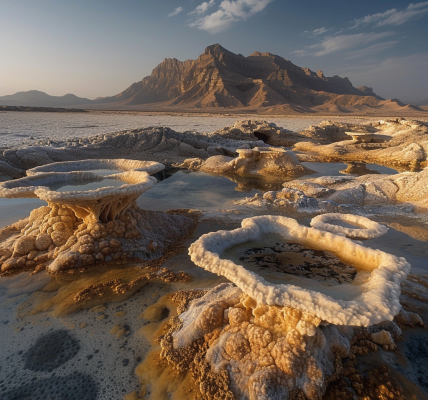Groundbreaking Study Visualizes 1.8 Billion Years of Earth’s Geological Transformations
Recent research has unveiled a stunning visual representation of Earth’s geological transformations over the last 1.8 billion years. This groundbreaking study, led by Xianzhi Cao from the Ocean University in China, employs advanced geological data to reconstruct the movements of tectonic plates across a significant portion of the planet’s history, providing insights into the dynamic nature of Earth’s surface.
Utilizing geological records, scientists have embarked on an unprecedented journey through time, mapping the planet’s evolution and showcasing the intricate dance of continents. The animation produced from this research illustrates the shifting positions of land masses, beginning with a familiar world map before revealing the dramatic movements of continents such as India and parts of Southeast Asia as they coalesced into the ancient supercontinent Gondwana.
Approximately 200 million years ago, during the reign of the dinosaurs, Gondwana connected with North America, Europe, and northern Asia, forming the colossal supercontinent known as Pangaea. As the animation unfolds, it traces the lineage of these supercontinents back through time, revealing the formation of Rodinia, which emerged from the fragmentation of Nuna, another ancient supercontinent, around 1.35 billion years ago.
This endeavor to map Earth’s historical plate tectonics is crucial for understanding the unique geological processes that define our planet. Unlike other celestial bodies in the Solar System, Earth is characterized by active plate tectonics, where the rocky surface is divided into tectonic plates that interact with one another. These interactions not only give rise to mountains and oceanic trenches but also play a pivotal role in shaping the planet’s climate and supporting life.
Plate tectonics is responsible for several geological phenomena, including earthquakes and volcanic activity. Additionally, the movement of tectonic plates facilitates the ascent of deep-earth rocks to the surface, allowing essential elements to erode and eventually enter rivers and oceans. This process is vital for sustaining life, as it provides critical nutrients such as phosphorus, which is integral to DNA structure, and molybdenum, which is essential for nitrogen fixation in various organisms.
Moreover, the interaction of tectonic processes with atmospheric carbon dioxide is fundamental to regulating Earth’s climate over extensive timescales. The geological activity associated with plate tectonics contributes to the sequestration of carbon dioxide in rocks, influencing global temperatures and climate patterns far beyond the immediate effects of human-induced climate change.
This research represents a significant step toward creating a comprehensive digital model of Earth’s geological history. By understanding the movements of tectonic plates over billions of years, scientists can gain valuable insights into the processes that have shaped the planet’s environment and the life it supports.
The study has been published in the open-access journal Geoscience Frontiers, marking a milestone in the field of geology and offering a fresh perspective on Earth’s dynamic history. The visualization of plate tectonics not only serves as a fascinating representation of our planet’s past but also emphasizes the interconnectedness of geological processes and the life forms they sustain.
As researchers continue to explore the depths of Earth’s geological record, the findings from this study highlight the importance of understanding our planet’s past to address contemporary challenges related to climate change and biodiversity. The intricate dance of tectonic plates is not merely a historical curiosity; it is a fundamental aspect of the Earth’s system that has profound implications for our future.
With advancements in technology and geological research, the ability to visualize and comprehend Earth’s complex history will only continue to improve. This ongoing exploration promises to deepen our understanding of the planet we inhabit and the forces that have shaped it over billions of years.





